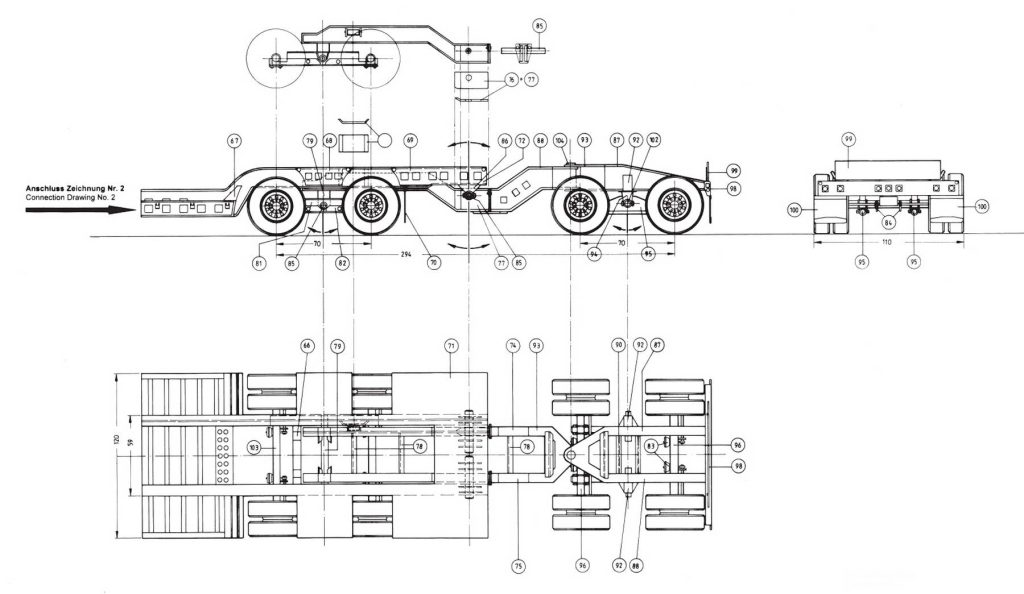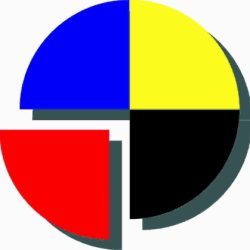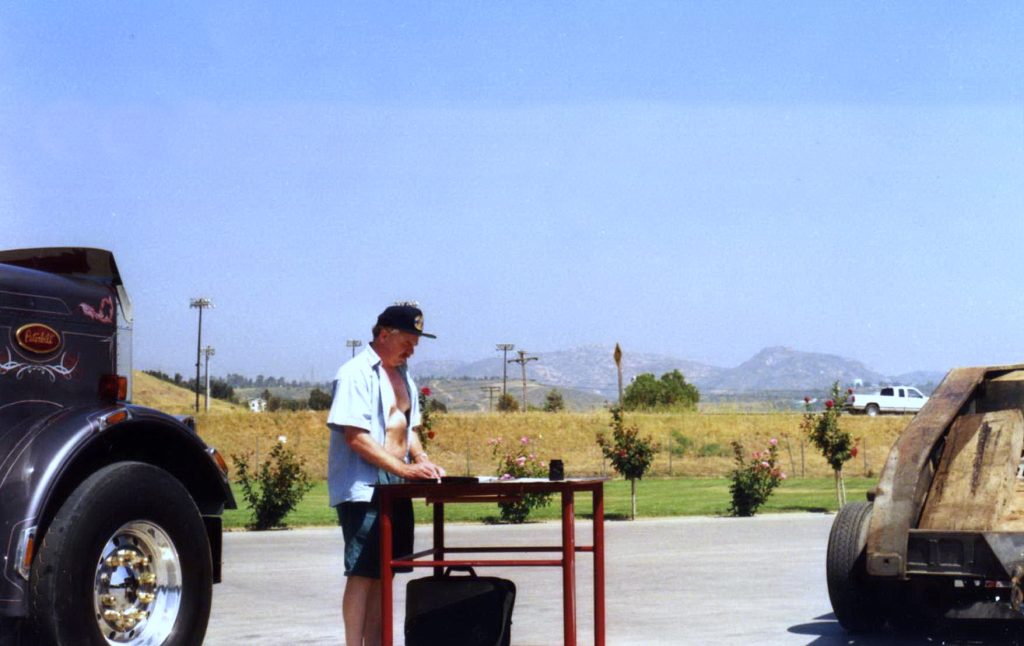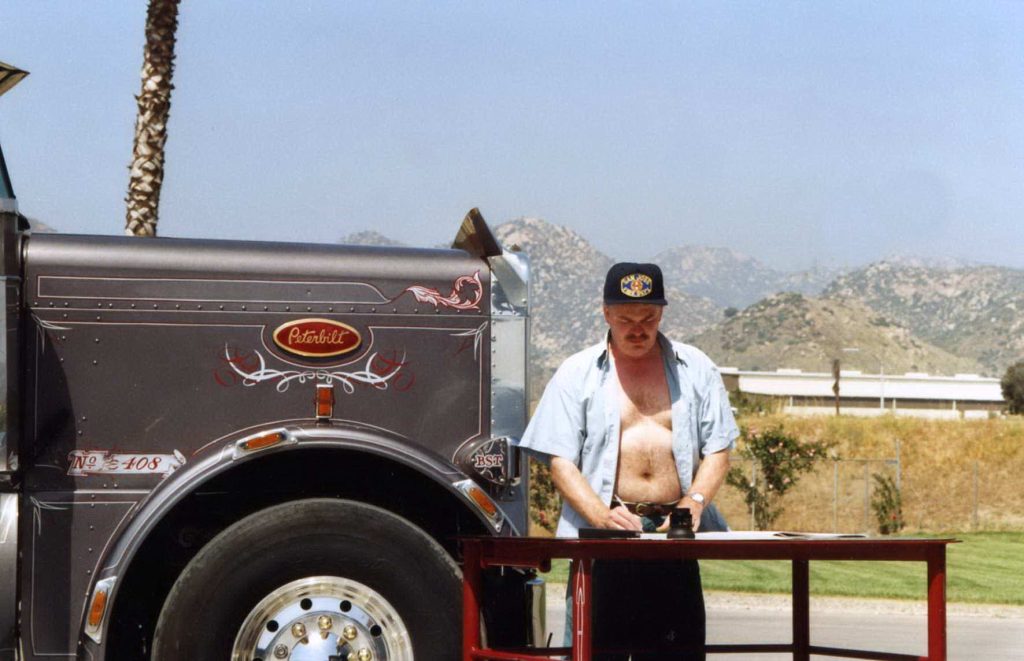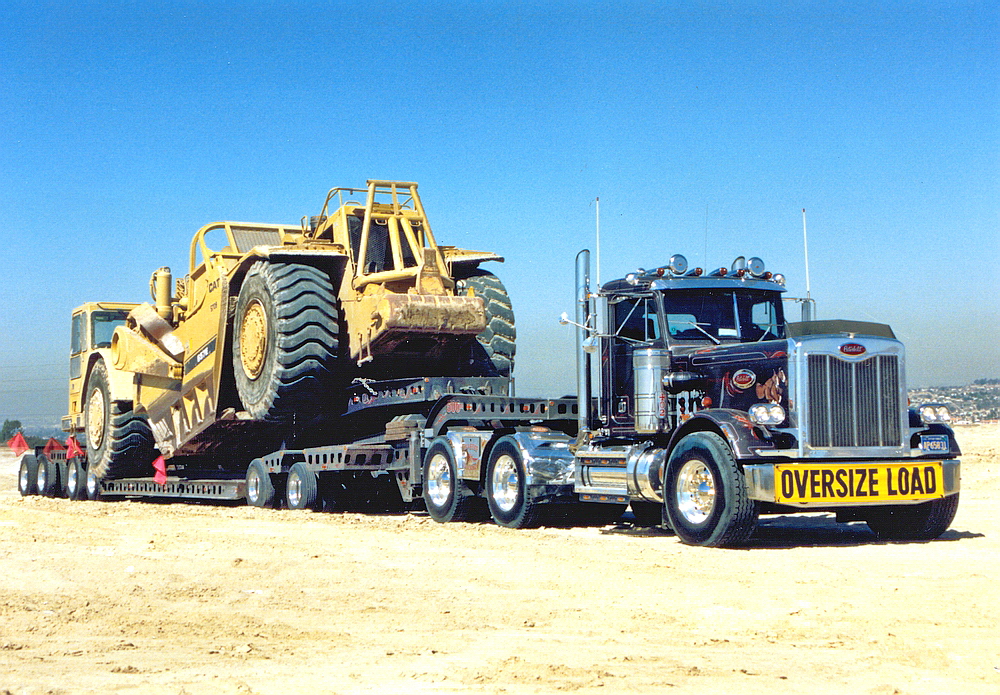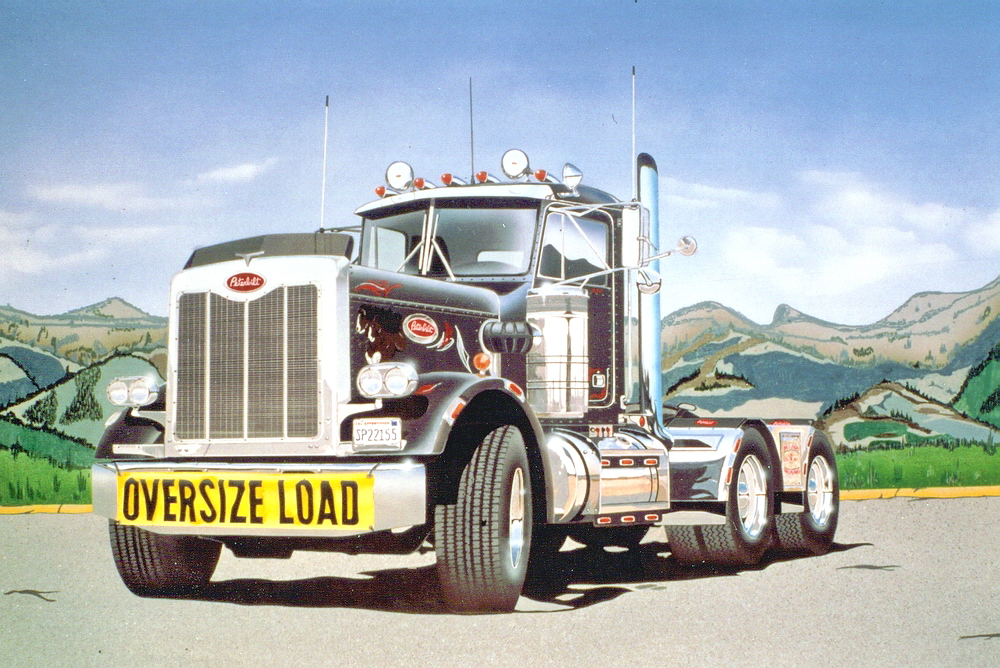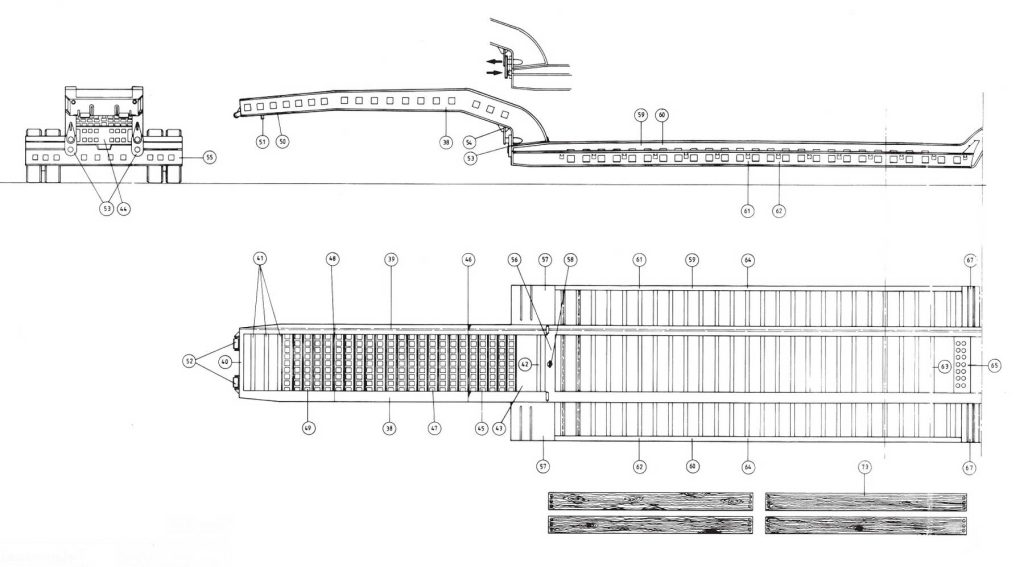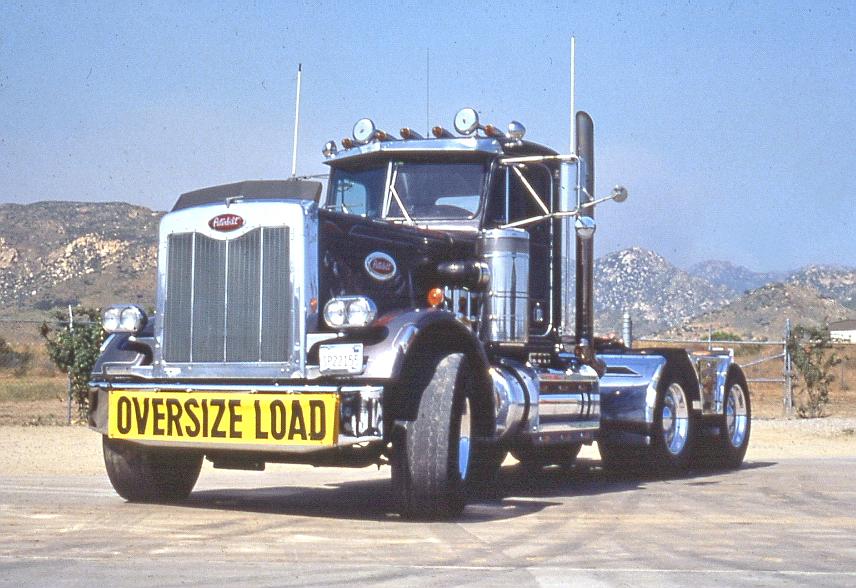
The development of this tractor by the company Bill Signs Trucking from San Diego, California was the absolute highlight for Revell alongside all the other developments. I was allowed to stay on the West Coast for 18 days (March 2000), including a full week at the heavy haulage company’s premises. During this time I had completely photographed and measured the Peterbilt 359. Although Revell had not planned a heavy-duty trailer, I also measured this one.
More pictures of the Peterbilt tractor called Clyde II here in the archive.
Unfortunately, Revell never realized the Kalyn-Siebert trailer, it would have been a perfect match for the tractor. It would also not have been as expensive as the cargo, a scraper from Caterpillar. So the Peterbilt 359, whose nickname was Clyde II, always stayed solo. Copyright: Nils Jansen
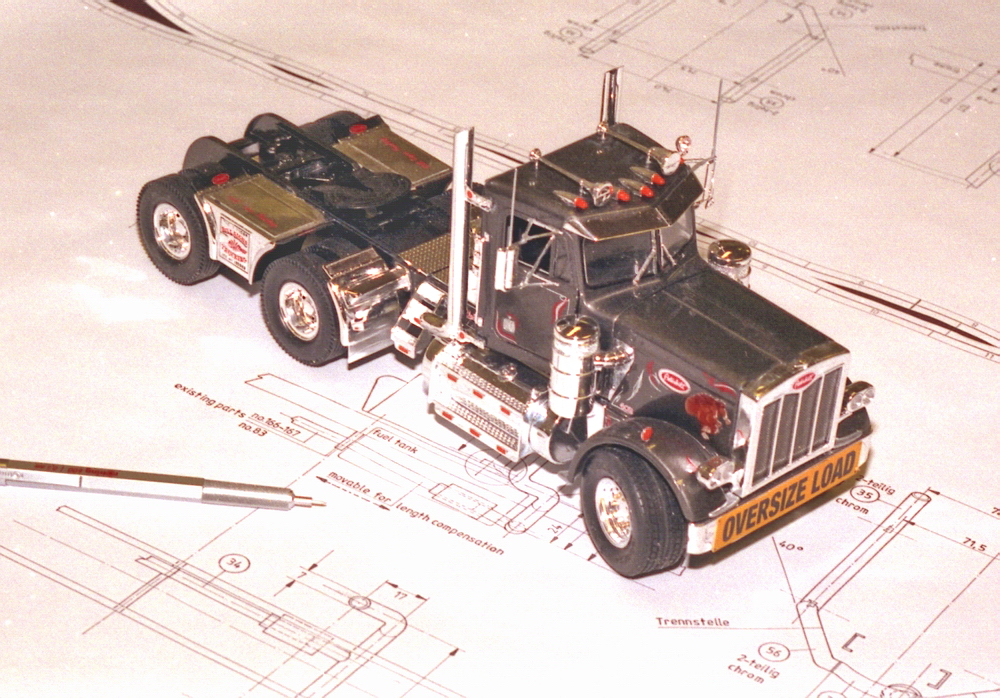
Back in the office, my first task was to make all the sketches with the dimensions in technical drawings for the tool shop. At the same time, after work and at the weekend, I built a prototype or hand sample model for the toy fair in Nuremberg. For this I once again used the existing Peterbilt tractor, whose item number I will never forget, 07410.
For those of you who would like to build the trailer yourself, I can offer drawings in the form of PDFs.
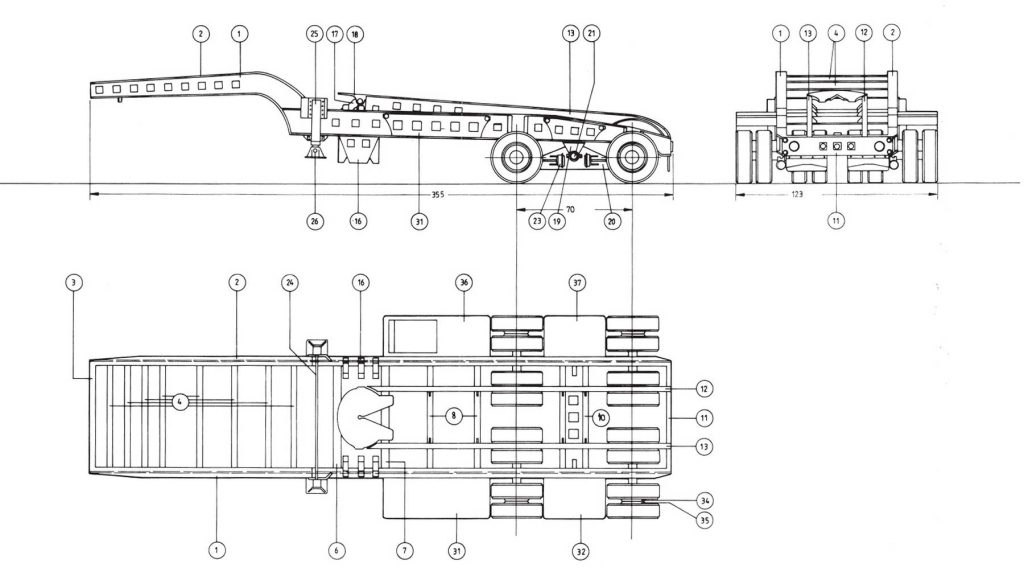
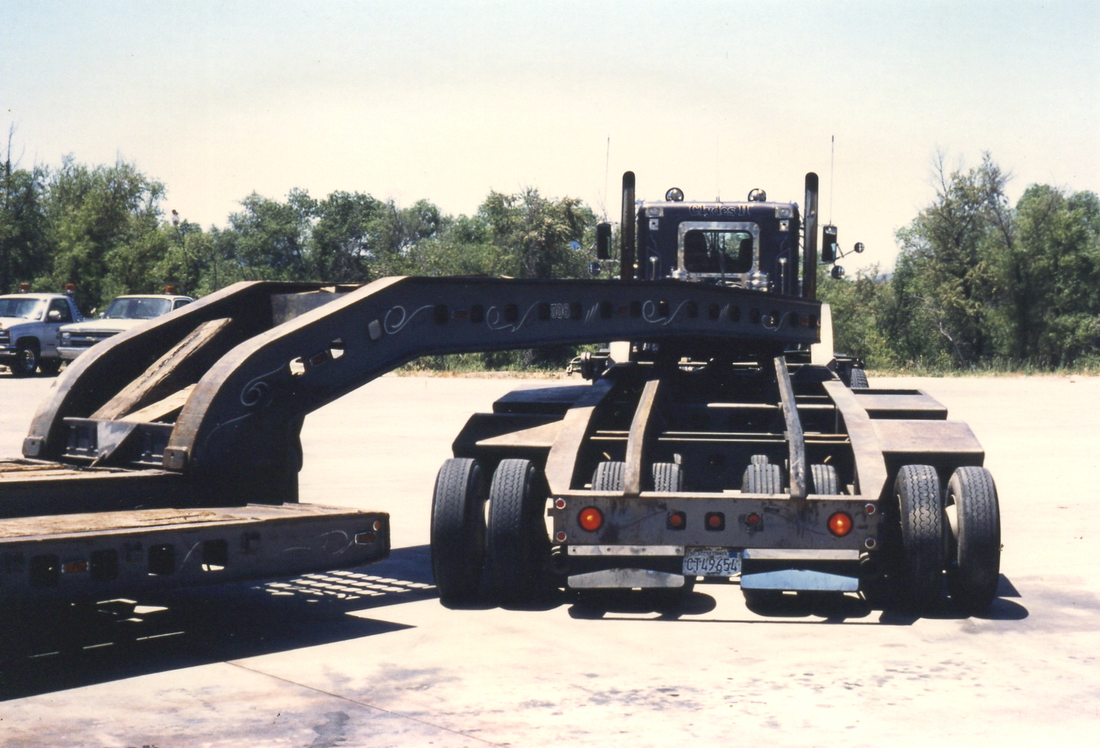
The dolly with goose-neck can be seen in the drawing above. In the picture on the left you can see what is meant. The gooseneck, as it is called in German, can be uncoupled and thus enables the load to be driven up. More pictures in the archive.
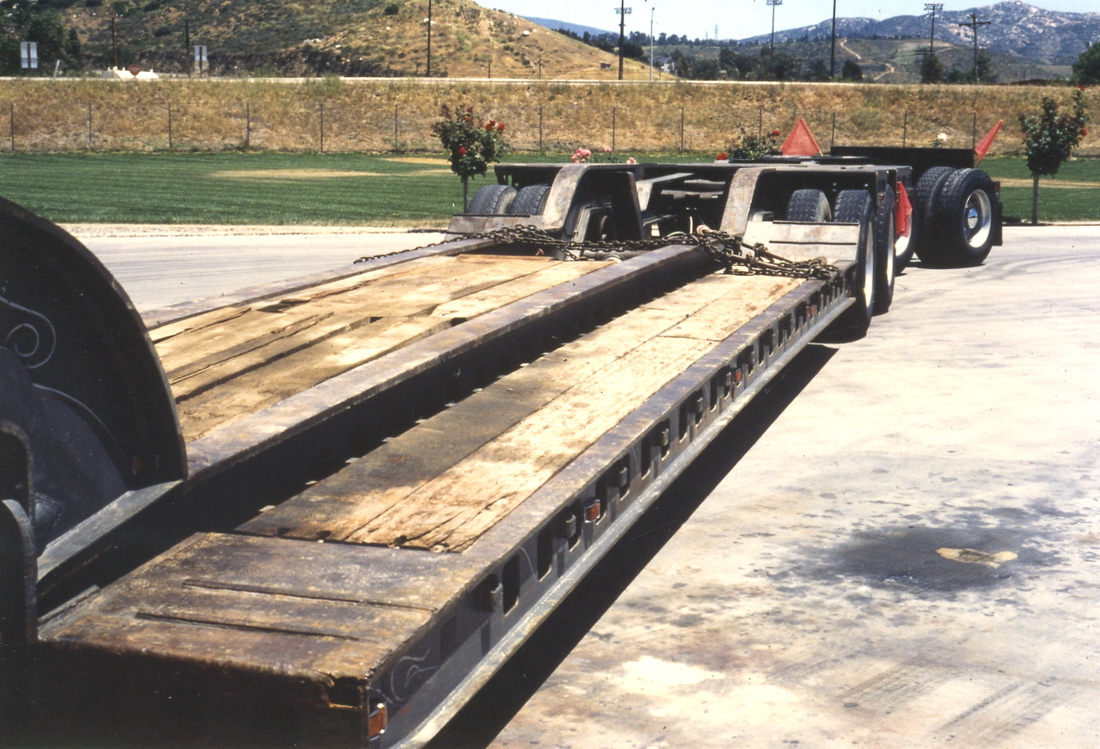
The loading area of the Kalyn-Siebert trailer is capable of holding 80 t, which is enough to transport wheel loaders, bulldozers and scrapers. There are also plenty of original photos in the archive of this area.
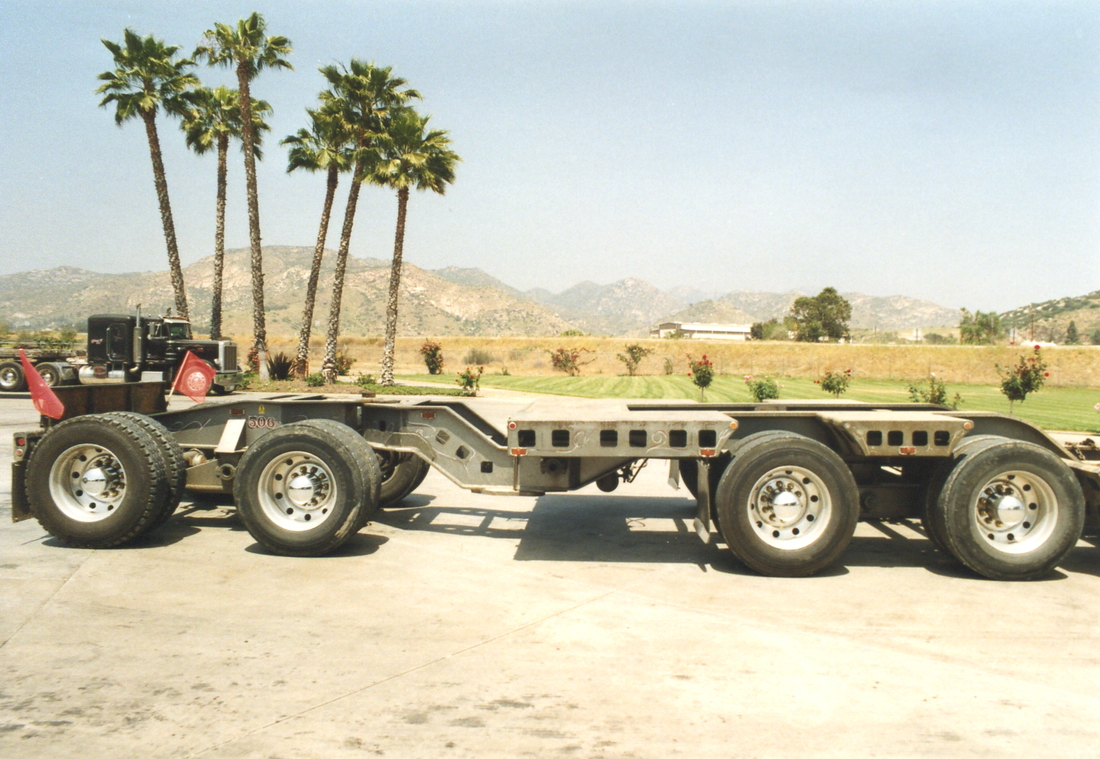
The Booster, with its eight pairs of wheels, takes up a large part of the total weight of the trailer. Unlike, for example, the high-tech heavy-duty trailers here in Europe from Nooteboom, Scheuerle, Faymonville and others, the Kalyn-Siebert still works purely mechanically, i.e. without electronics. Pictures in the archive.
